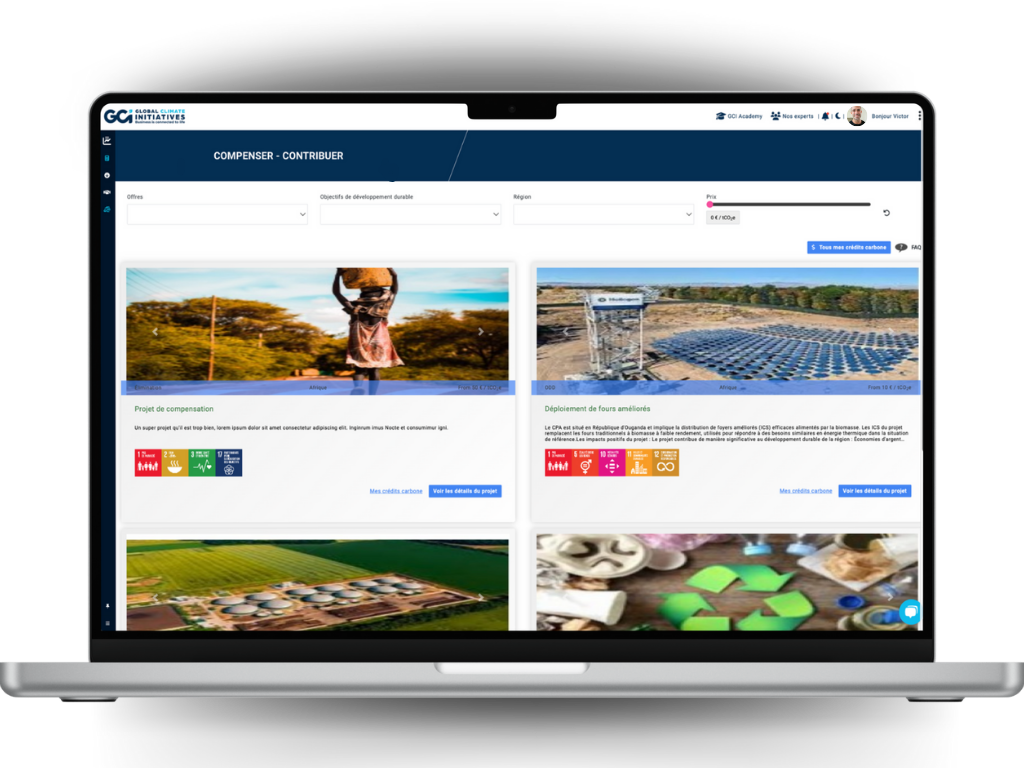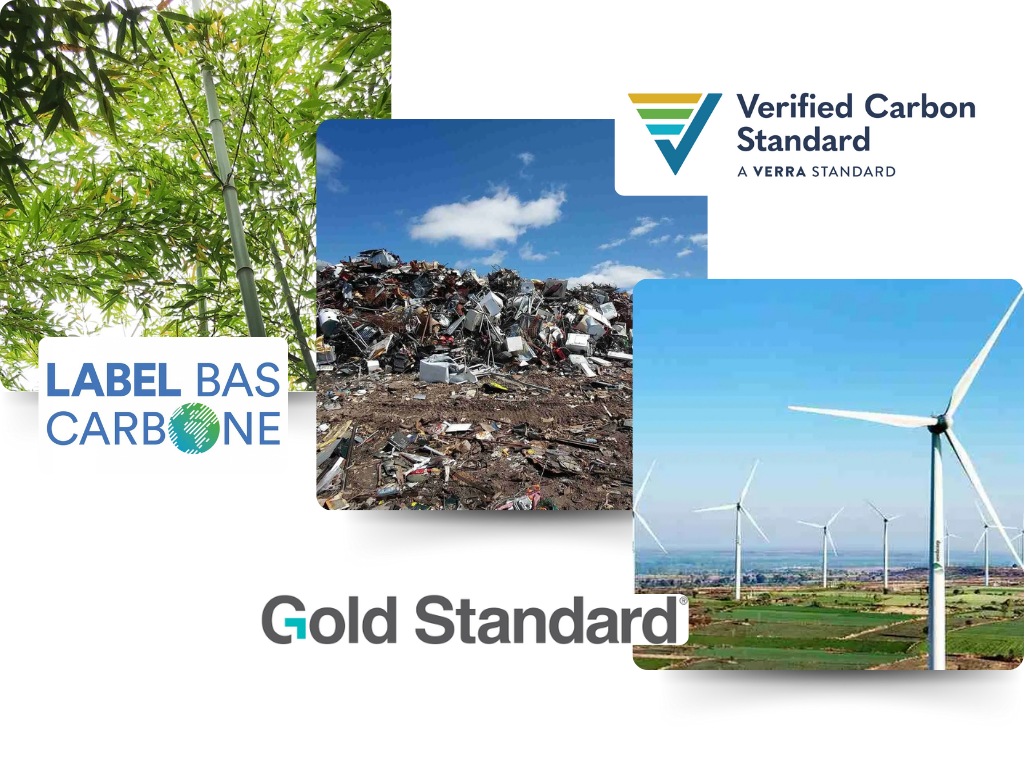S’engager via nos projets de compensation ou contribution carbone
Le service de compensation carbone de GCI vous permet de neutraliser une partie ou la totalité de vos émissions de gaz à effet de serre (GES) en soutenant des projets de compensation certifiés.
Grâce à une approche transparente et mesurable, nous vous aidons à investir dans des initiatives concrètes et impactantes.


Neutralisez vos émissions de CO2 et investissez dans des projets à impact positif pour l’environnement.

Améliorez votre image RSE en soutenant des projets de compensation carbone certifiés.

Soutenez l’innovation durable et contribuez à l’objectif de neutralité carbone 2050.

Réduisez votre empreinte carbone tout en favorisant la création de puits de carbone naturels.
Atteindre la neutralité carbone : un engagement stratégique pour 2050 grâce à trois leviers clés
Calculer et réduire
Décarbonner ses achats
Compenser – contribuer
Pourquoi s’engager dans les projets de compensation-contribution carbone proposés par GCI ?
Devenir un leader de la responsabilité sociale
En contribuant aux ODD à travers nos projets, vous affichez votre volonté d’agir pour le climat et partagez vos actions environnementales de manière transparente auprès de vos parties prenantes et votre équipe interne. Vous améliorez ainsi l’image et le positionnement de votre entreprise.


Être porteur d’initiatives
pour le climat
Investir dans la trajectoire Net Zéro Carbone permet d’attirer des partenaires engagés dans le développement durable. Les entreprises partageant les mêmes valeurs sont souvent enclines à travailler et investir ensemble. Le renforcement de la réglementation environnementale incite aussi les entreprises à planifier leurs futures règles en la matière.
Accédez à une gamme de projets enregistrés sous les principaux standards internationaux (VERRA, Gold Standard, CDM), ainsi qu’avec le Label Bas Carbone.
GCI propose des projets conformes aux normes de certification, mais aussi des projets humains permettant d’agir sur des facteurs comme la création d’emplois, le soutien aux communautés locales, la préservation et le développement de zones naturelles dites à risques et d’autres facteurs socio-économiques locaux impactant.

Une fois votre contribution carbone effectuée, vous obtiendrez votre attestation d’acquisition de crédits carbone certifiés VCS, Gold Standard ou Label bas carbone.
GCI vous accompagne vers la neutralité carbone

Analyse de la demande
_______
Étude de la demande et des besoins clients en matière de compensation carbone :
- Typologie de produits (conservation, évitement, plantation, reboisement, énergie, éolien, etc.)
- Volume (en tonnes)
- Prix par tonne
- Localisation
- Standard, labellisation ou certification spécifique selon le volume et la localisation souhaitée (VERRA, Gold Standard, ICROA, Label Bas Carbone, ISO, RINA, VERITAS, etc.)

Etude de la demande et proposition de projet de compensation
_______
Proposition de projets selon typologie, volume et localisation :
- Sous 1 à 2 semaines, présentation au client de 2 à 3 produits correspondant à ses attentes.
- Pour un volume supérieur à 5 000 t avec demande de labellisation spécifique (type LBC), proposition de 3 à 4 produits distincts

Analyse et validation du projet par le client
_______
Analyse et retour du client sur les propositions de produit :
- Validation du projet proposé.
- Validation de la typologie de projet, avec demande de nouvelles propositions (délai supplémentaire d’une semaine).

Finalisation du projet
_______
Décision finale et validation du choix du produit :
- Accompagnement du porteur de projet pour l’achat de la compensation carbone.
- Suivi global du projet de compensation tout au long de sa durée.
Plus d’informations sur la compensation carbone
Contribuer
en s'engageant
Un expert dédié à la compensation/contribution carbone vous apportera la réponse à toutes vos questions concernant le crédit carbone, le déroulement d’un projet ou l’impact positif fourni par l’entreprise dans son action de compensation.























